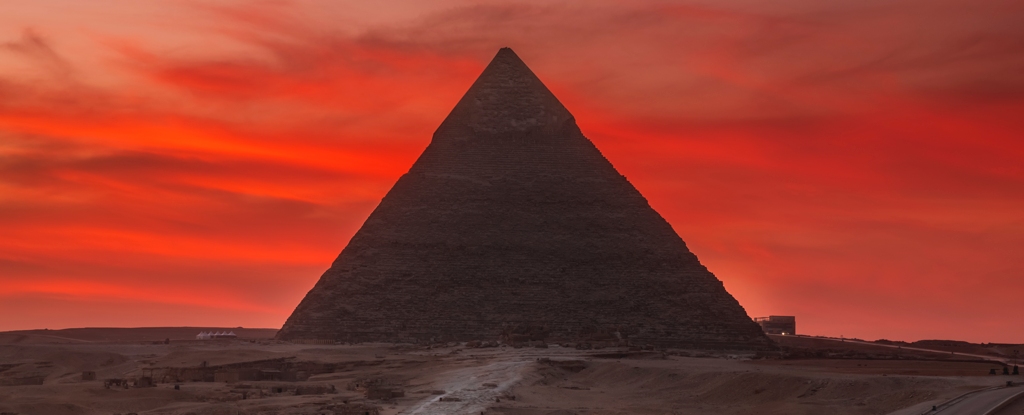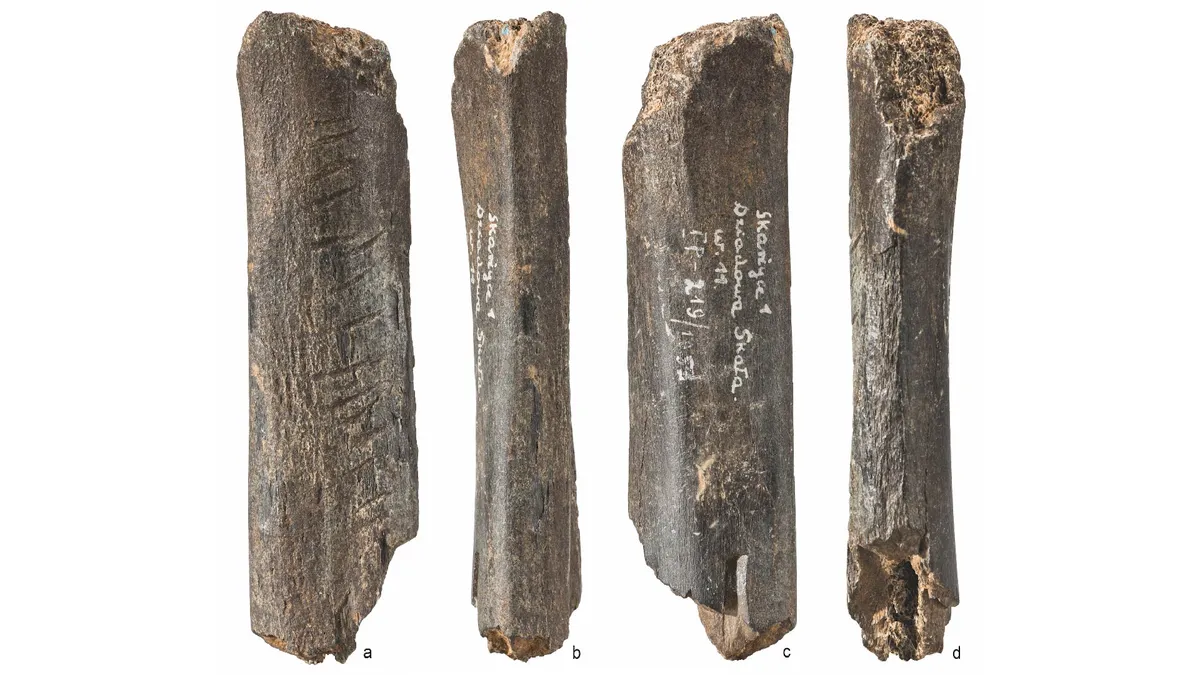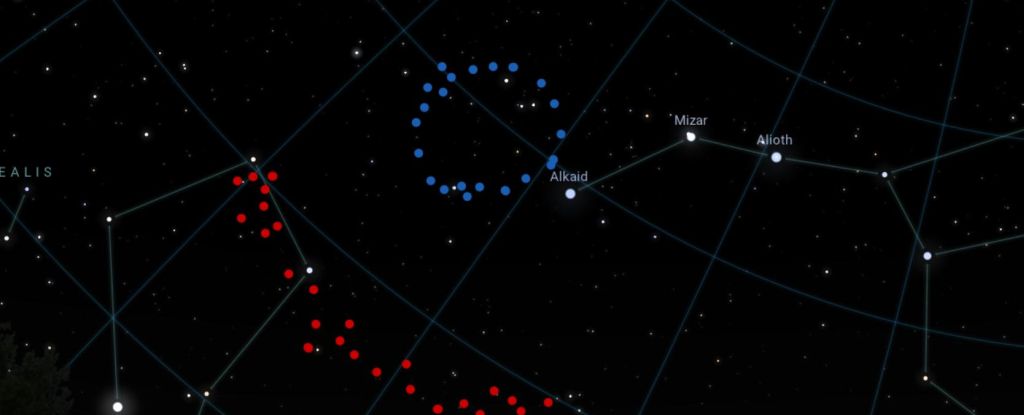Ancient news stories

The iconic, “upside-down” baobab tree first emerged on the island of Madagascar, new research into its tangled evolutionary history reveals. It’s still not clear, however, how it jumped from Madagascar to Australia. See the new study, which was published Wednesday (May 15) in the journal Nature.

Scientists have discovered a long-buried branch of the Nile river that once flowed alongside more than 30 pyramids in Egypt, potentially solving the mystery of how ancient Egyptians transported the massive stone blocks to build the famous monuments…according to a study revealing the find on Thursday.
The first dinosaurs to have a warm-blooded metabolism might have emerged 180 million years ago during the early Jurassic period, according to a new study. New research published in the journal Current Biology might have answered that question.

A nearly 130,000-year-old bear bone was deliberately marked with cuts and might be one of the oldest art pieces in Eurasia crafted by the Neanderthals, researchers say. In the new study, the researchers examined the bone with a 3D microscope and computed tomography (CT) scans, which enabled them to make a digital model of the bone.

MIT researchers, including several undergraduate students, have discovered three of the oldest stars in the universe, and they happen to live in our own galactic neighborhood. They have published their findings (May 14) in the Monthly Notices of the Royal Astronomical Society.
:focal(713x539:714x540)/https://tf-cmsv2-smithsonianmag-media.s3.amazonaws.com/filer_public/28/ec/28ec3d59-8bc5-4f28-b509-1c53dc070e48/jun2024_e17_prologue.jpg)
For many decades, archaeologists were convinced that the first people to arrive in the Americas came some 13,000 years ago, after the Ice Age glaciers melted. The White Sands footprints, whose age scholars estimated again, in a paper published this past October, by analyzing tree pollen and quartz grains in the sedimentary layers, provide the most conclusive evidence to date that humans were actually here much earlier, toward the end of the last ice age. It’s possible that they reached North America more than 32,000 years ago.

An enigmatic L-shaped structure found underground near the pyramids at Giza may be an entrance to a mysterious deeper feature below it. The team found an anomaly roughly 6.5 feet (2 meters) beneath the surface. It appears to be an L-shaped structure measuring at least 33 feet (10 m) in length, the team wrote in their paper, published May 5 in the journal Archaeological Prospection.
New research suggests it might be more correct to call the Stone Age the “Wood Age”… a new study published in the Proceedings of the National Academy of Sciences suggests that “Stone Age” might be a misnomer. Unlike stone, wood doesn’t age well. Wooden objects perish over thousands of years. Recently, however, thousands of wooden artefacts from the distant human past have been uncovered.
A pair of archaeologists have uncovered a strange series of rock art carvings that show boats and cattle – both vitally in need of water to work properly – in the middle of one of the driest parts of the African desert. The pair have published their findings in The Journal of Egyptian Archaeology.

The old saying may be true: What doesn’t kill you makes you stronger. At least that’s the case for human civilizations across 30,000 years of history, according to a new analysis published May 1 in the journal Nature.

After one final dig, world heritage site Ness of Brodgar is to be covered up to protect it for future generations

In the new study, published April 30 in the journal Nature Communications, scientists analyzed the genomes of 54 highlanders from Mount Wilhelm who lived between 7,500 and 8,900 feet (2,300 and 2,700 meters) above sea level, and 74 lowlanders from Daru Island, who lived less than 330 feet (100 m) above sea level.

A colossal structure in the distant Universe is defying our understanding of how the Universe evolved. In light that has traveled for 6.9 billion years to reach us, astronomers have found a giant, almost perfect ring of galaxies, some 1.3 billion light-years in diameter. It doesn’t match any known structure or formation mechanism.

Researchers this week claimed to have found the final resting place of the Greek philosopher, a patch in the garden of his Athens Academy, after scanning an ancient papyrus scroll recovered from the library of a Herculaneum villa that was buried when Mount Vesuvius erupted in AD79.
A team of palaeo-archaeologists is featured in a new documentary in which the experts have reconstructed the face of a Neanderthal woman who lived 75,000 years ago…The cave is possibly a Neanderthal burial site.

Is Stonehenge aligned with the moon? Scientists hope to find out during a rare ‘major lunar standstill, which happens once every 18.6 years.








